The 3 Worst Golf Putting Tips for Your Short Game
Golf Putting Tips: 3 Putting Myths Debunked
If you’ve been struggling with your putting, I can take a pretty good guess at the golf putting tips you’ve been hearing.
“Keep your head perfectly still.”
“Your stroke should be long and even.”
“You need to fix the shape of your putting motion.”
These golf putting tips are all too common . . . and a bit too misleading. I’ve seen a lot of golfers fail to make the improvements they’re capable of just because they’ve latched on to advice like this. Now I’m going to debunk all three of these popular putting myths and teach you three new drills that will finally help you take strokes off of your game.
But before we get started, let’s cover some basics.
What Makes a Good Putting Stroke?
Every person that plays golf wants to make more putts. As all of us know, the task of making putts consistently on the golf course is not easy.
No golfer is a perfect putter. However, there are a few things that all great putters work on that leads to them to make more putts.
A good putting stroke can be attributed to a number of things. But the most important aspect is face control.
Correctly delivering the center of the putter face to the ball is what allows the golf ball to roll perfectly down your intended line.
A big mistake with golfers today is they think that in order to have a good putting stroke the putter head should stay exactly where it is throughout the stroke. This creates stiffness and a feeling of where the golfer is trying to force the ball in the hole.
Great putters are smooth and natural. They let the putter head swing and have great rhythm.
Never trying to force the ball in the hole.
One Common Misconception About the Putting Stroke
The average amateur golfer might think that every great putter tries to make a perfectly straight back and straight through putting stroke.
When in reality, this could not be farther from the truth…
As stated previously, great golfers make the center of the putter face connect with the ball. And to do this, it all starts with a proper set up.
Based on the testing we’ve done, we find that golfers should have the ball slightly forward of center in their stance. The ball should be directly below them at their lead eye level.
They should also keep their weight slightly more towards their lead foot (left foot for a right handed golfer).
From here, you can begin your putting stroke.
Toe Hang vs Face Balanced
A factor that a lot of golfers don’t take into consideration when thinking about their putting stroke is what putter they are using.
Another common misconception is that every putter on the market today will work for you, as long as you have a good stroke.
And yes, obviously, having a good stroke is vital to hitting good putts. But having the correct putter in your hands can really dictate if you’re going to hit good putts.
There are two main types of putters to look over when choosing which putter is for you.
Toe hang and face balanced putters.
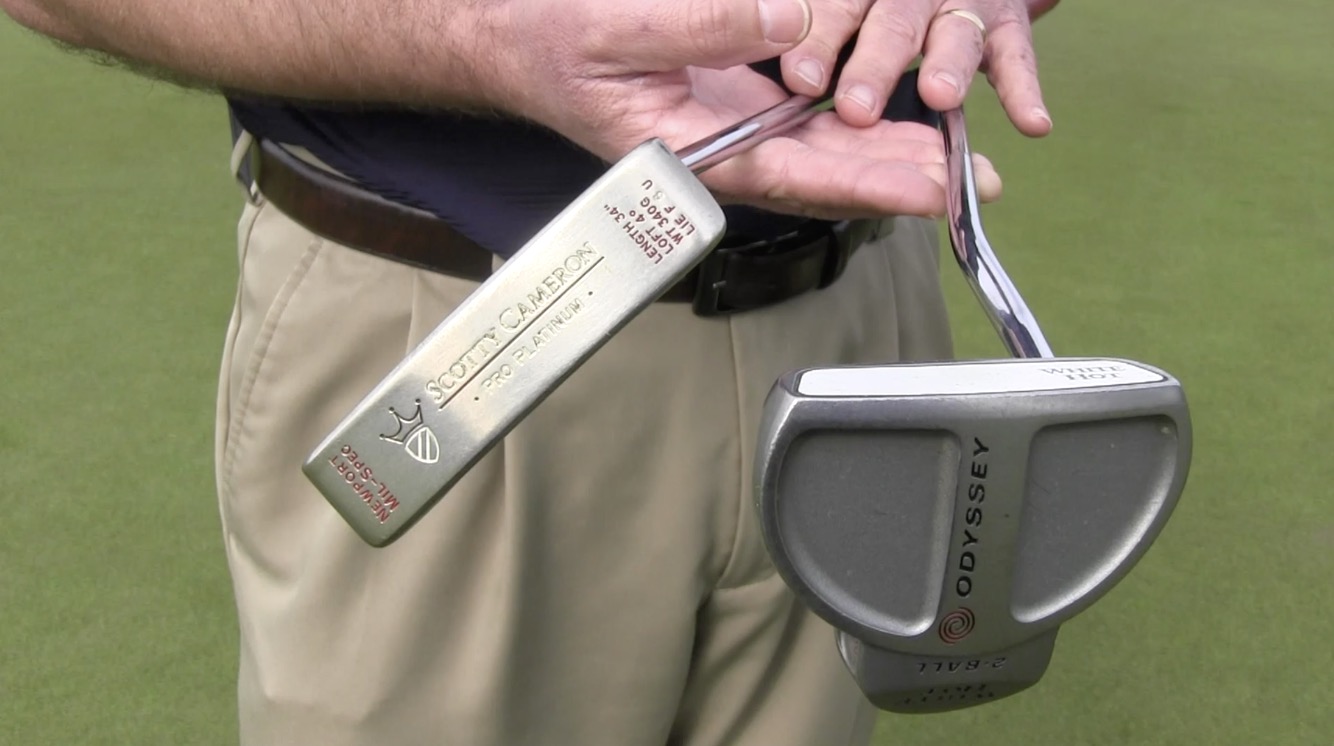
They differ in a number of ways but the major difference is where the weight is distributed within the putters.
Toe hang putters have more weight shifted towards the front of the toe head, allocating for more putter head rotation.
Face balanced putters have less weight towards the front of the putter head which doesn’t allow the putter to rotate nearly as much.
If you’re a right handed golfer, and see that you miss your putts more often to the right then a toe hang putter is what you need. The opposite can be said for face balanced putters.
Working on and having a great putting stroke is important, yes, but finding the right putter for you can really help improve your golf game.
Now that we’ve covered the basics, let’s move on to the golf putting tips that are actually hurting your short game.
Myth #1: You Have to Keep Your Head Still
This is probably one of the best-known golf putting tips out there. And it’s not wrong. It’s just over-emphasized.
While it is best to keep your head still as you putt, a little head motion won’t destroy your stroke. Many golfers hear “Don’t move your head!” so frequently that they get the impression any movement will be a disaster. This creates tension in their stroke, and it pulls focus away from a much bigger concern: steadiness in the body.
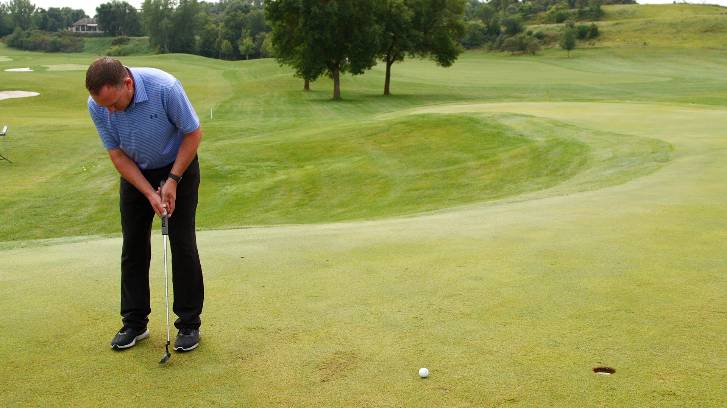
When you putt, it is far more important to keep your body still. There should be no rotation in your torso, no shifting in your legs, and no extra movement in your arms.
If you’re just now realizing that body movement is a problem you never realized you had, here’s an easy drill to help break the habit.
The Drill
The steps here are pretty basic.
- Set up your putt.
- Lift your trail foot, balancing only on the lead foot.
- Make your putt, doing your best to stay steady through the stroke.
The only way to stay balanced on that lead foot is to keep your body as still as possible. If you can find your stability in this drill, you’ll have mastered the steadiness you need to finally improve your putting.
Myth #2: You Need a Long, Even Putting Motion
In all fairness, there are golfers who putt with a long, smooth motion where the backstroke and follow-through are the same length.
However, the majority of accomplished golfers putt with what I think of as an “authoritative motion.” Their backstroke accounts for about 60 percent of the overall length of the stroke, giving them a shorter follow-through (about 40 percent). The result is that they deliver a little more energy to the golf ball at impact.
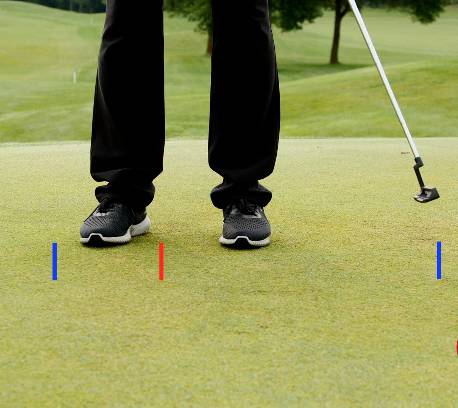
Now, to be clear, they are not jabbing or popping the ball. They are simply getting the momentum they need in the backstroke and transferring that energy from the clubhead to the ball.
By contrast, that long, smooth, 50/50 putt you’re used to hearing about doesn’t create that same energy transfer. Instead, you’re more or less pushing the ball forward with the clubface.
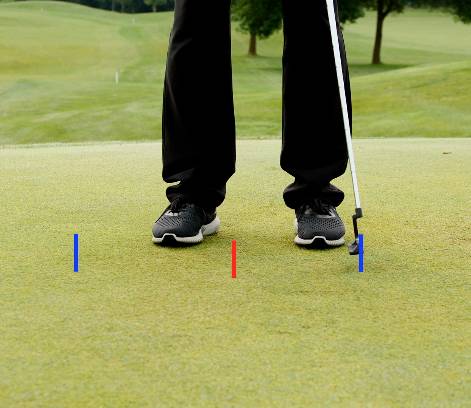
If the long stroke has become your go-to habit, here’s a drill that can help you discover a more authoritative motion.
The Drill
For this drill, you will need your golf ball and two tees.
- Set up your putt about four or five feet from the hole.
- Place tees in the ground on either side of your ball. They should be positioned like a little gateway square to the cup.
- Take your putt. Try to feel yourself deliver energy to the ball as the tees force your putter to stop short.
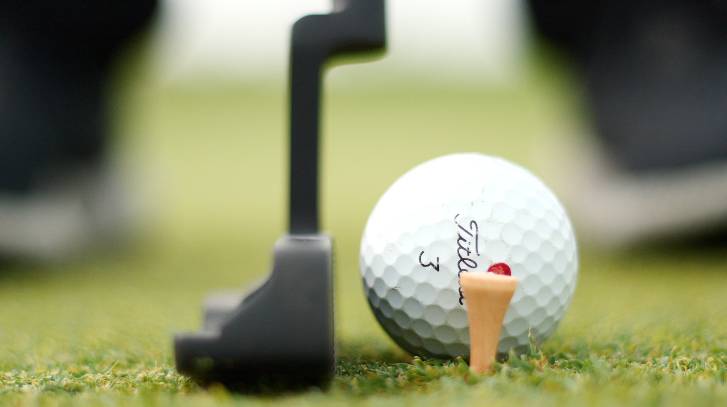
Don’t expect to get the ball in the hole on your first several tries. If you’re used to sweeping the ball towards the hole, your body is going to have to learn a whole new approach to creating the ball speed you need. And that’s the whole point. The more you run this drill, the better you’ll be at creating an effective putting motion, rather than a long one.
This drill also comes with the side benefit of helping you make sure you’re delivering a square face alignment at impact. Your putter face should come in contact with both tees at once. If you find yourself hitting the inside tee first (and you’re a right-handed golfer), then you know your face is a little open. If you hit the outside tee, that’s your signal that your putter face is closed. As you’re about to learn, correcting these errors is another essential step towards improving your time on the green.
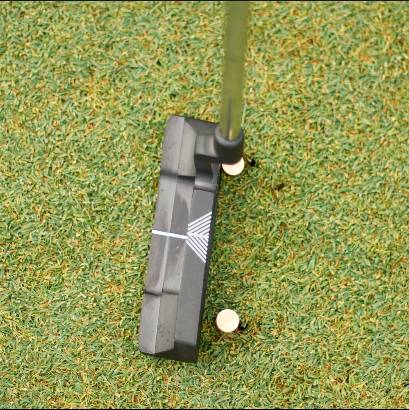
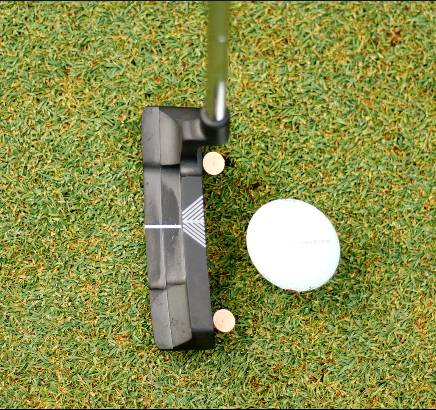
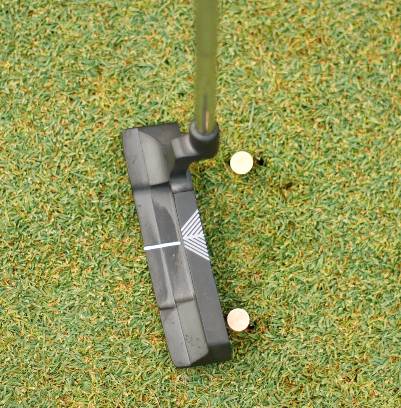
Myth #3: Your Stroke Should Have a Perfect Arc
I can already hear the dissent of my fellow golf instructors, but I truly believe there is no such thing as a perfect arc. Everybody is a little bit different, and the concept of “correct shape” is relative to your individual stroke.
Far more important than mastering your arc is learning to consistently deliver a square putter face at impact. That right there is one of the best golf putting tips you can get to make more putts.
You could have the smoothest arc possible, but if your putter face isn’t square, the golf ball isn’t going to make it into the cup.
You can correct that mistake with this great drill I actually learned from a student.
The Dime Drill
For this drill, you will need an alignment rod, two tees of the same length, a Sharpie, a dime, and a flat area on the putting green.
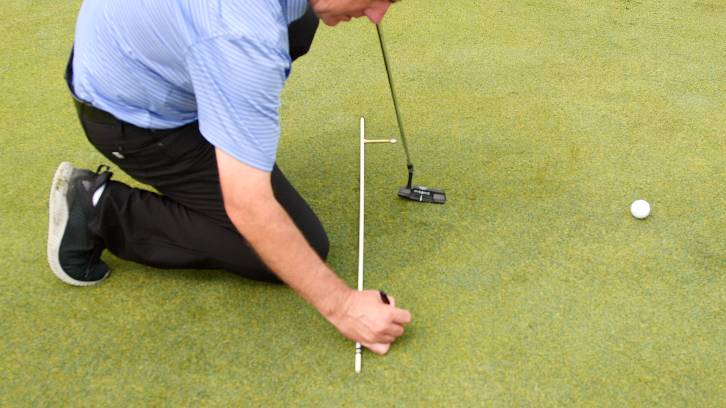
- Place the alignment rod on the ground.
- Place the tees on the ground at either end of the rod so they are perpendicular to the rod and parallel to one another.
- Use the Sharpie to mark the green at the tip of one tee.
- Place a dime on the ground at the tip of the other tee. Because you used same-length tees, the dot and dime should be in line with one another.
- Remove the tees and alignment rod and place your golf ball on the dot.
- Make your putt with the goal of rolling the ball over the dime.
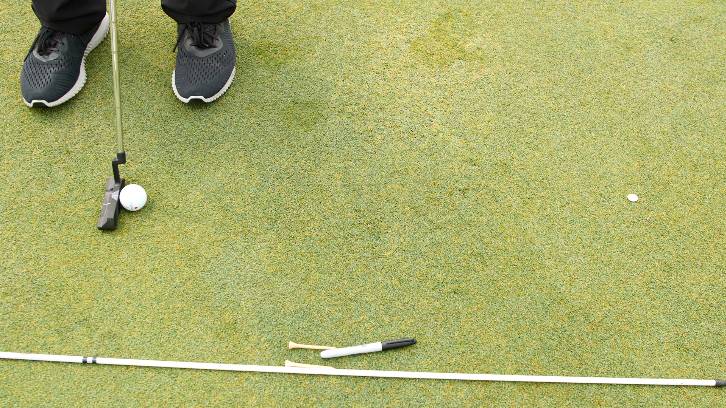
This is such a great drill for squaring the putter face, because there isn’t much room for error. A coin is a much smaller target than a cup. That said, feel free to use a quarter instead if you find the dime is a little too small. I prefer to use a dime because the ball rolls over it more easily.
The Big Picture
While there is some truth to traditional putting wisdom, the advice you’re most likely to hear is all too often the least likely to help your game. These old familiar tips tend to pull focus away from much more important concerns.
Remember:
- Don’t worry about keeping your head still; think about keeping your body steady.
- Don’t try for a long, even putting motion; let the follow-through be shorter than the backstroke so you can deliver a little energy to the ball.
- Don’t obsess over creating the perfect arc; think instead about delivering a perfectly square putter face.
Refer back to these drills as often as it takes to turn these new tips into old habits. And get ready to see a few strokes start disappearing from your scorecard.
Was This Helpful?
Do you think you’ll test these new golf putting tips? Or do you prefer the traditional putting advice? Do you have any questions?
Join us in the comments to let us know what you’re thinking. Agree or disagree, we want to know what’s on your mind.
For more unconventional tips, be sure to follow us on Facebook, Twitter and Instagram for more little-known tips and tricks to transform your game. Our primary goal is always to help you play better golf. And for helpful video tips, subscribe to our YouTube channel!
And now that you’ve learned the worst putting tips, learn 3 Pro Putting Tips for Amateur Golfers!


I believe many instructors now think the ball should be outside your eyeline and not directly below the eyes. Mike Malaska (sp?) comes to mind.
Enjoyed the helps on putting. Will be back for more.
Thanks Allan! This is our best video on putting https://youtu.be/OTTrgZ35sj8
Todd, I have reviewed many of your videos concerning driver and slicing with the driver but not with irons. One point that is never made clear is does the weight remain on the lead leg for the entire swing–or does it shift from lead leg to trailing leg and then back to lead leg again? This is an important distinction for all golfers.
Thomas,
Thanks for asking. Here is a good video which will provide more insight https://youtu.be/TJtnX8PEA0Q
I don’t necessarily disagree with your teaching, but I’m a left handed senior golfer. I have discovered that I putt better with an open stance: left foot 45degree angle to the ball, while my right foot is back and open, two foot apart. This allows me to see a more direct line of sight to the hole. I strike the ball firmer and it goes straighter towards the target line!
Hi Todd.
I’m referring to your putting video on misinformation and why straight back and straight forward is not a good putting method.
I try to stay straight on my stroke and when I do my arms don’t get longer they maintain the same length but they arc up on the way back and down on the way forward thus(hopefully) meeting the ball at the bottom of the arc and square to the line. Any response?
Joe,
These are great points and questions. Here is a good video to help https://youtu.be/vQtlmnz-dy8